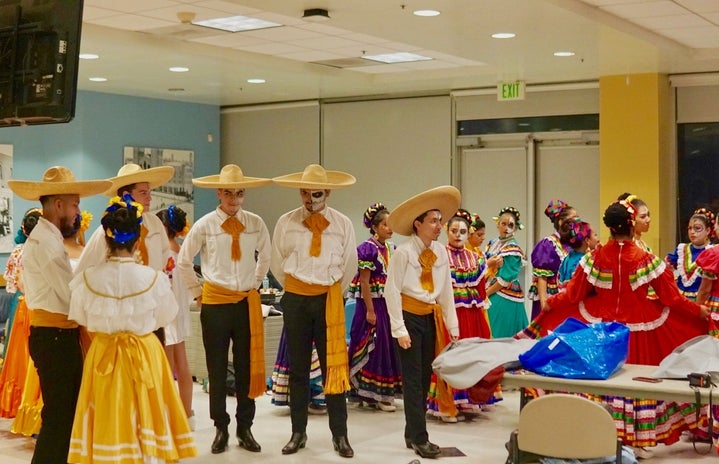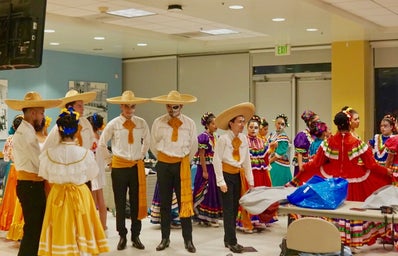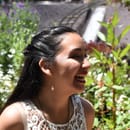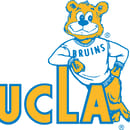After five weeks of practices, the day had finally come: Grupo Folklórico de UCLA’s annual Dia de Los Muertos show! In the weeks leading up to the show, our team’s two artistic directors taught all our members 6 different songs from the Mexican state regions of Chiapas, Guerrero, Jalisco, Sinaloa, Veracruz and Nuevo Leon. Each state region had different music styles and vestuario (traditional dance costumes). At the same time, we all helped each other master the steps by arriving to practices an hour early and having extra practices beyond our scheduled meetings. The dedication of our members was strong and we, the cabinet, were so proud to see them grow.

This was going to be my second and last Dia de Los Muertos, DDLM, performance, so to learn all these songs meant the world to me. And serving all the members of the team always made my heart so full because I could see the smiles on their faces, and the joy they found from learning the new songs. As the show got closer, my excitement and the excitement of all the other 98 dancers in the show, continuously grew. This was an event we had worked so hard for, and an event that my 12 cabinet counterparts and I had also worked hard to organize so that members could claim their space at a school they may feel out of place in.
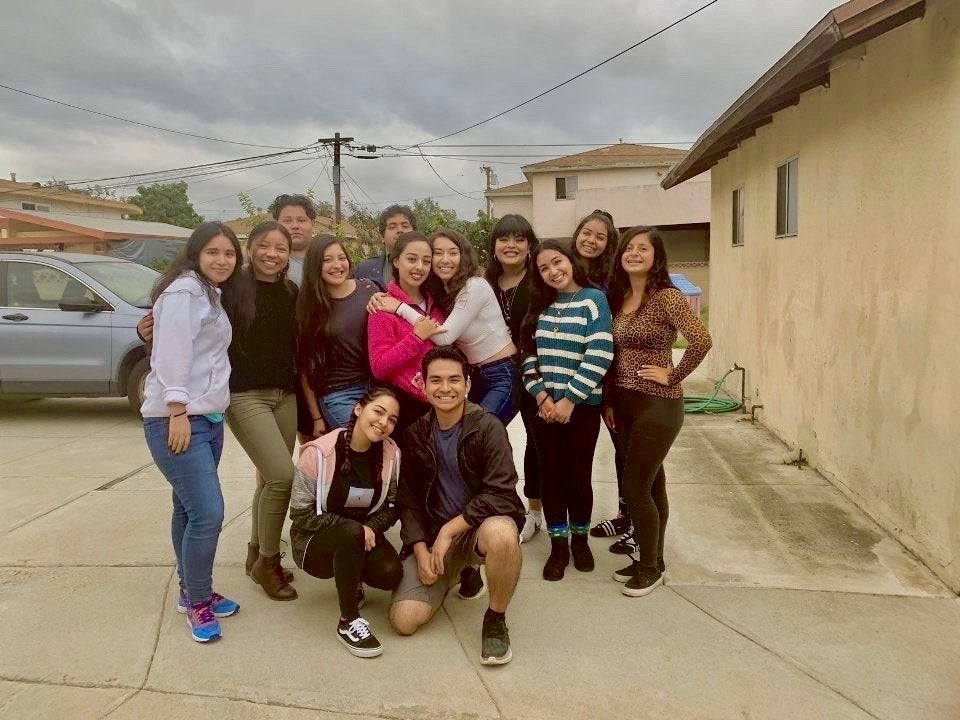
On the actual day of the show, my day started at 9 AM with me pulling my hair up into a high bun and adding my basic braid, a braid made of yarn to create a fuller hair look. After all my baby hairs were slicked back using hairspray, I started doing my calavera (skull) makeup. Since this was going to be my last DDLM I wanted to make sure that my makeup looked nice, and spent an extra long time drawing in flowers using eyeshadow, cream face paint and white foundation as a base.
For the other half of my face, my eyeshadow consisted of pink, orange and yellow on the lids, and purple, blue and green on the lower lash line. I then topped it all off with winged liner and a big pair of lashes. To finish out my makeup, I put on red lipstick and looked at the final product in the mirror. The fact that I had mostly finished getting ready settled the feeling that it was show day.
When I reached the Bruin Reception Room, I steamed my vestuario and helped my ahijada, think big and little in sororities, do her eyeshadow. By that time it was now 4 PM: Ackerman Grand Ballroom was open to the cabinet for decorations while members finished getting ready.
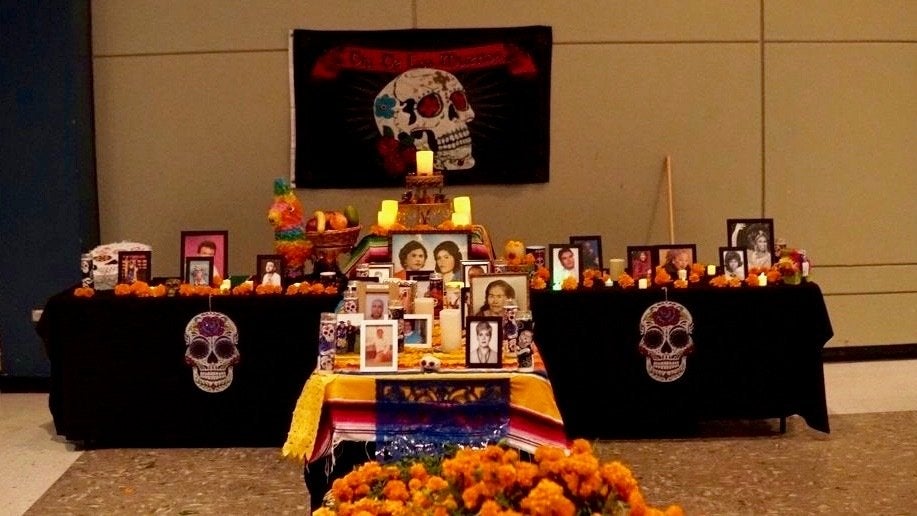
Rushing inside the cabinet, I started prepping the cempasuchil (carnations) for the altar, laying out papel picado on the stage, hanging handmade tissue flowers along the photo booth, putting coloring pages down on tables, setting up the conchas and hot chocolate, delegating volunteers, putting face paint at other tables, doing sound check with our two musical performers and other tasks.
When we had all finished preparing, we rushed back into the Bruin Reception Room to change into our vestuario. Unzipping the bag to feel the soft satin material of my Nuevo Leon vestuario made the feeling of happiness stronger. In a short while, the doors would be open and over 700 people would be watching. Once my zapatillas (traditional womxn’s dance shoes) were buckled, I got into my run-through line. Hearing the taps of the shoes gave me goosebumps.

Once the doors to Ackerman opened, hundreds of people came streaming in, trying to find a seat to watch their family or friends perform. Guests also started getting conchas and hot chocolate, dancing to the live music of Conjunto Sexto Norte and Mariachi de Uclatlan, coloring, and getting their faces painted.
Finally, after a long day of anticipation, came time for our set. The entire team danced their hearts out on that stage, honoring their loved ones and their culture while dressed in the vestuario of their regions. It was a moment my team would never forget. The audience cheered for the six songs that were performed, and applauded the dance skills the team showed.

By the time it was my turn to get on stage, my region being the last song danced, it was a very surreal feeling. It was bittersweet knowing that something we had been prepping so long for was finally here and about to end so quickly. When the show had ended and I got off stage, I was reminiscing on the year before when I had first learned to dance on the stage of Ackerman Grand Ballroom. I had created a family with this team, and called this space between CTO and Pauley home. Grupo Folklórico de UCLA has truly fostered a space where students, alumni, faculty and community members can come to see culture, to create family and learn how to dance.
There are not enough words to fully represent what the team has meant to me and what performing in this Dia de Los Muertos show was like. This is a moment that will forever hold a special place in my heart and I cannot wait to see what this year’s Fiesta Mexicana will be like in Royce Hall. Until that moment comes, I will leave you with the phrase we use to end every practice: Zapateado, Falda, Machete!
